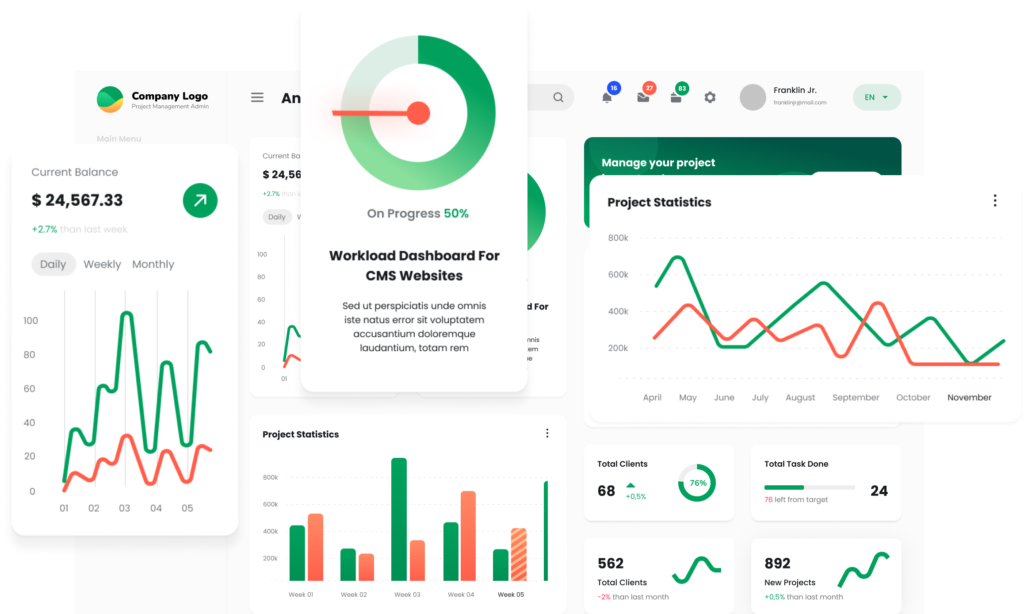Salary Management for Small Businesses
Table of Contents
ToggleIntroduction Navigating the complexities of employee salary management is a crucial, yet often daunting task for small business owners. It’s not just about paying your employees; it involves creating a balanced system that supports your business’s financial health while also attracting and retaining talent. This article aims to simplify this process, covering essential aspects such as setting up a salary structure, calculating paychecks, and adhering to legal regulations.
Setting Up a Salary Structure
 A well-defined salary structure is the backbone of effective payroll management. Start by researching industry standards and average salaries for similar roles. Consider factors like experience, education level, and job responsibilities. A clear structure helps in maintaining fairness and transparency, and it also aids in budgeting and financial forecasting. Regularly updating this structure is crucial to keep pace with market changes and internal company growth.
A well-defined salary structure is the backbone of effective payroll management. Start by researching industry standards and average salaries for similar roles. Consider factors like experience, education level, and job responsibilities. A clear structure helps in maintaining fairness and transparency, and it also aids in budgeting and financial forecasting. Regularly updating this structure is crucial to keep pace with market changes and internal company growth.
Key Aspects for Salary Structure
- Market Research: Do your research! Understand what similar businesses in your area are paying for comparable positions. Salary data can be found through online resources, industry associations, or salary surveys. This helps ensure you’re offering competitive compensation to attract and retain talent.
- Job Analysis: Evaluate each role within your company. Consider the required skills, experience, education, and responsibilities for each position. This helps you categorize jobs into levels or groups with similar pay ranges.
- Salary Ranges: Instead of a single fixed salary for each job title, establish a salary range. This allows some flexibility for factors like experience or qualifications of individual candidates. Aim for a range that’s competitive but also sustainable for your business.
- Internal Equity: Maintain fairness within your organization. Analyze how salaries compare across different positions with similar levels of responsibility and required skills. Address any significant pay gaps that can’t be justified by experience or qualifications.
- Communication and Transparency: Once your structure is in place, communicate it clearly to your employees. Outline the pay ranges for different positions and explain how factors like performance will be considered for raises or promotions. Transparency builds trust and helps employees understand their potential for growth within the company.
Calculating Paychecks
The actual calculation of paychecks involves several steps. Firstly, determine the gross pay, which is straightforward for salaried employees but may vary for hourly workers based on the hours worked. Then, account for deductions such as federal and state taxes, Social Security, Medicare, and any other benefits or retirement plan contributions. The result is the employee’s net pay. Utilizing payroll software can significantly simplify this process, reducing the likelihood of errors.
Compliance with Regulations
 Staying compliant with wage laws is non-negotiable. This includes adhering to minimum wage standards, accurately calculating overtime pay, and timely tax submissions. Laws can vary significantly from one location to another, so it’s essential to be well-informed about the regulations specific to your business’s location. Failure to comply can lead to legal complications and financial penalties.
Staying compliant with wage laws is non-negotiable. This includes adhering to minimum wage standards, accurately calculating overtime pay, and timely tax submissions. Laws can vary significantly from one location to another, so it’s essential to be well-informed about the regulations specific to your business’s location. Failure to comply can lead to legal complications and financial penalties.
Key Points to Consider
- Minimum Wage: Be aware of and comply with the federal minimum wage, as well as any higher minimum wage requirements in your state or locality. Minimum wage can vary by location, so research the specific rate that applies to your business.
- Overtime Pay: Understand the rules for overtime pay. Generally, non-exempt employees (most hourly workers) qualify for overtime pay at one and a half times their regular rate for hours worked beyond 40 in a workweek. There are some exemptions for certain professions, so double-check the regulations that apply to your employees.
- Tax Withholding: Accurately withhold federal, state, and local income taxes from employee paychecks. The IRS provides resources and tools to help you determine the appropriate withholding amounts. Failure to withhold properly can result in penalties for your business.
- Recordkeeping: Maintain meticulous records of all employee wages, deductions, and tax withholdings. These records should be kept for at least three years, and potentially longer depending on your state regulations. Good recordkeeping is crucial for audits and helps ensure you can prove compliance.
- Pay Stubs: Provide payslips (pay stubs) to your employees with a detailed breakdown of their earnings, deductions, and net pay. This transparency helps employees understand how their pay is calculated and fosters trust. Some states may even require paystubs by law.
Payroll Management Best Practices
Efficient payroll management hinges on several best practices. Automating the process as much as possible can save time and reduce errors. Establishing a regular payroll schedule (e.g., bi-weekly or monthly) and maintaining meticulous records are also important. Transparency with employees about how their pay is calculated and any changes to the payroll process is key to maintaining trust and morale.
Conclusion – Salary Management for Small Business
Effective salary management for small business is more than a routine administrative task; it’s a strategic element crucial to the success of any small business. By establishing a clear salary structure, accurately calculating paychecks, complying with legal standards, and adopting best practices in payroll management, small business owners can create a stable and fair compensation system. This not only supports the financial health of the business but also contributes to a satisfied and motivated workforce.






